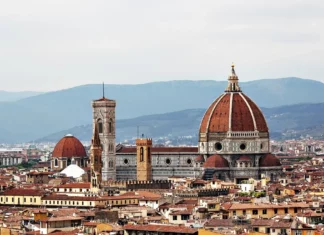Palazzo Pitti is the symbol of wealth and power of the city of Florence, and throughout history was inhabited by three different dynasties: the Medici, the Habsburg-Lorraines and the Savoy.
The original architecture of the palace dates back to the 15th century and its name comes from its first owner – Florentine banker Luca Pitti – a great rival of the Medici family. It was purchased in 1550 by Cosimo I de’ Medici and Eleonora di Toledo who wanted to transform it into the family’s new grand-ducal residence and it soon became the symbol of the Medici’s power over Tuscany. Bartolomeo Ammannati, the Grand Duke’s favourite architect, enlarged the façade and created the imposing courtyard and magnificent Italian garden of Boboli behind the palace. Then, it was Giorgio Vasari who built the famous Vasari Corridor in 1565, which connected Palazzo Pitti to Palazzo Vecchio, passing through Ponte Vecchio and the Uffizi.
Today Palazzo Pitti is home to four different museums: the Treasure of the Grand Dukes on the ground floor; the Palatine Gallery and the Imperial and Royal Apartments on the main floor; and lastly, the Gallery of Modern Art and the Museum of Fashion and Costume on the second floor.
The Boboli Gardens and the Pitti Palace evolved together throughout three centuries and under three different dynasties: the Medici, the Hapsburg-Lorraine and the Savoy. The Medici were the first to design its layout, creating the model of the Italian-style garden, populated by ancient and Renaissance statues, adorned with grottos and large fountains, which make it a genuine open-air museum. The terraced area includes the Rococò pavilion known as the Kaffeehaus and the Limonaia (the Lemon House). At the centre of the Rose Garden is the Palazzina del Cavaliere, which houses the Porcelain Museum.
Discover here three centuries of history and art!



